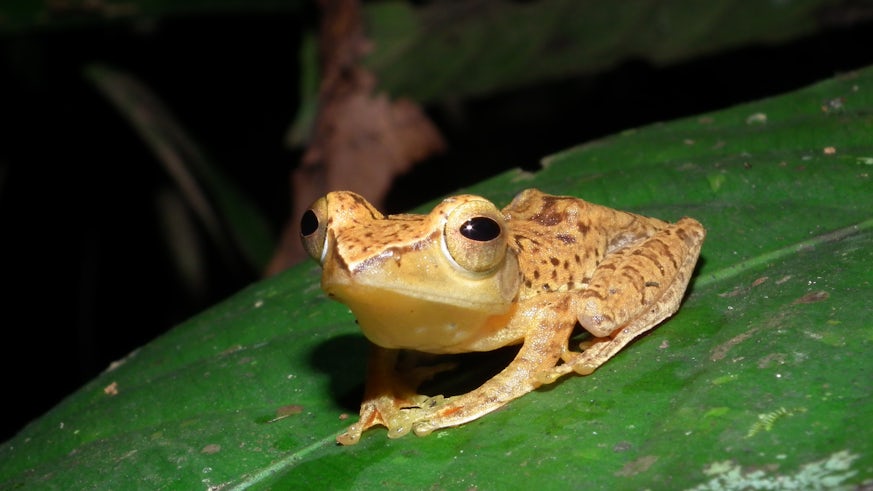Oil palm plantations impact on species outside areas of deforestation
29 March 2018

The impacts of oil palm plantations on Bornean frogs aren’t just limited to areas of deforestation, but are also affecting species in neighbouring rainforest habitats, finds new research.
Collaborative research by Cardiff University, the Danau Girang Field Centre and the University of Melbourne, has discovered that oil palm plantations are not just effecting wildlife in the areas of forest that it has replaced, but is also impacting on species in adjacent areas of untouched rainforest.
The study, conducted in Borneo, examined the number of frog species found in forest and plantation habitats and assessed how these frog communities changed across the habitat types.
Dr Benoit Goossens, Director of Danau Girang Field Centre, Reader at Cardiff University and an advisor to the Sabah Wildlife Department, said: “Across Southeast Asia, large areas of rainforest have been replaced with large scale oil palm plantations, which has resulted in detrimental impacts on forest species.
“Agricultural plantations, such as oil palm, not only support fewer species compared to the rainforest that they replace, but they also have a negative impact on species in adjacent areas – due to something called edge effects.
“Edge effects are changes in dynamics of communities of animals or species diversity that occur at habitat boundaries. These effects can be pronounced if habitat structure changes abruptly between two different habitat types.”
Until recently, the information surrounding the impacts of oil palm plantations on amphibians in surrounding areas has been limited. But the new research has been able to establish an understanding of the effects of agricultural activity can have on frogs in adjacent rainforest habitats.
Dr Sarah Scriven, Post-Doctoral Research Associate at the University of York, said: “It is really important to widen our understanding of how oil palm agriculture may impact forest species that are sensitive to disturbance.
“Amphibians are especially vulnerable to habitat disturbance due to a complex number of factors relating to their specific physiology and ecology.”
The study found that there was a higher number of frog species in forest areas compared to oil palm plantation sites, and plantation sites were dominated by species of little conservation concern.
Forest habitats supported species that are unique to Borneo and more tree-dwelling species compared to the oil palm plantations.
Dr Graeme Gillespie, a wildlife ecologist based at the Department of Environment and Natural Resources in Northern Territory, Australia, said: “Our results suggest, for the first time, that oil palm plantations have adverse negative impacts on amphibian diversity several kilometres into adjacent forest habitats”.
The researchers also discovered that the change in habitat structure caused by the destruction of rainforest to make room for oil palm plantations is likely to be responsible for the changes in frog species richness and community composition.
Dr Benoît Goossens said: “The density of the rainforest canopy increases the further away from the plantations you travel – this also coincides with an increase in frog species richness.
“Our research suggests that a higher number of frog species were found in less disturbed forest sites, far from the forest-plantation edge.
“Whilst oil palm provides a valuable and economically important crop, this study demonstrates that oil palm plantations may have detrimental effects on sensitive species in adjacent rainforest habitats.
“These new findings suggest that in order for small forest patches or narrow corridors to be of long-term conservation value in oil palm landscapes, their sizes and widths need to adequately account for the considerable influence of edge effects.”